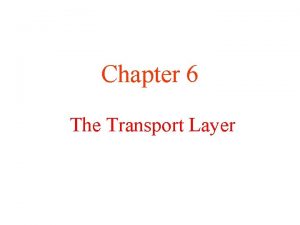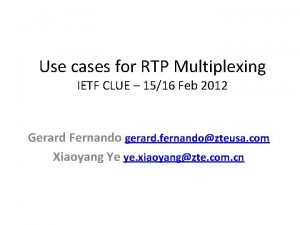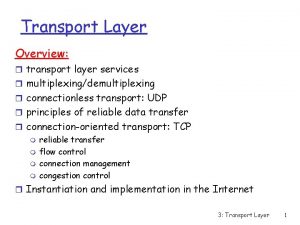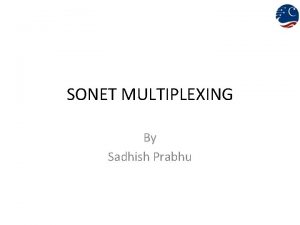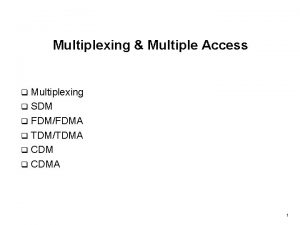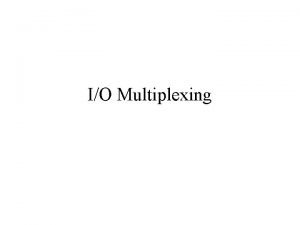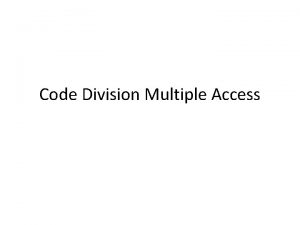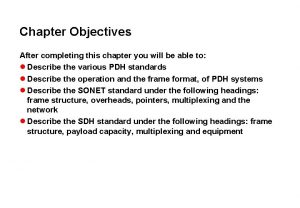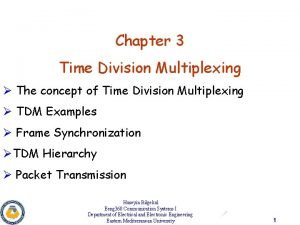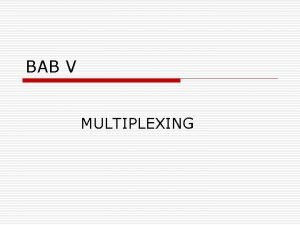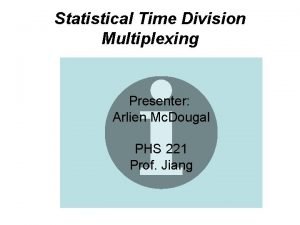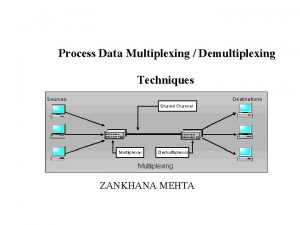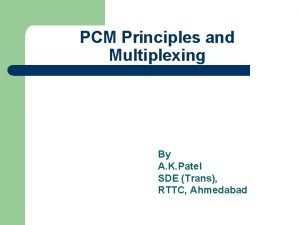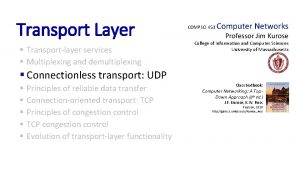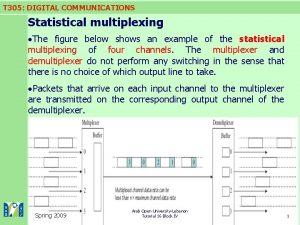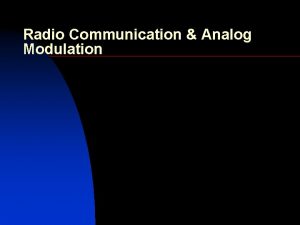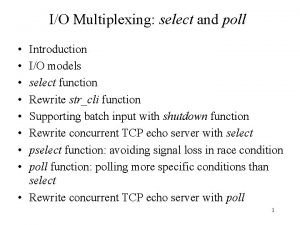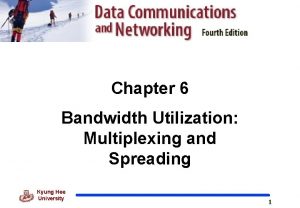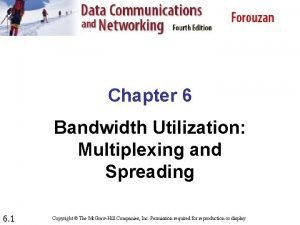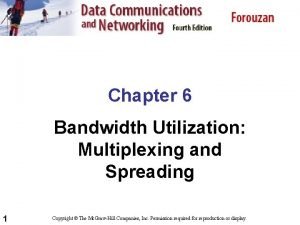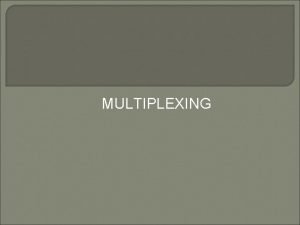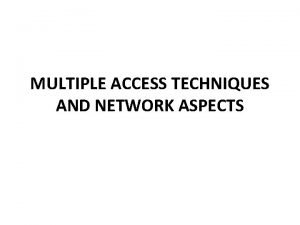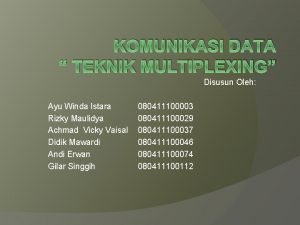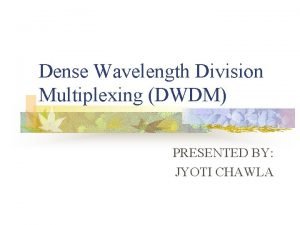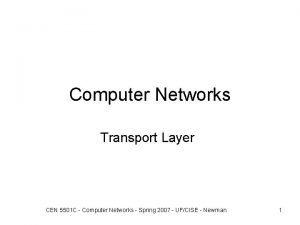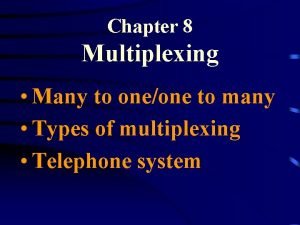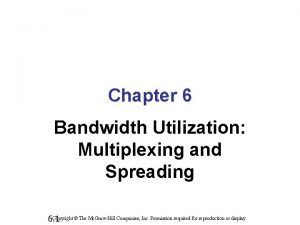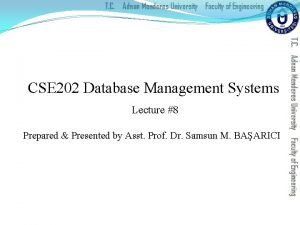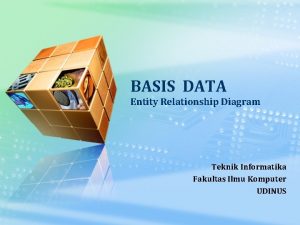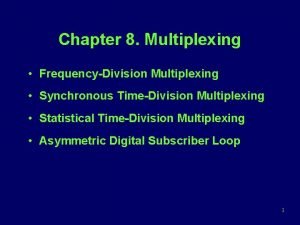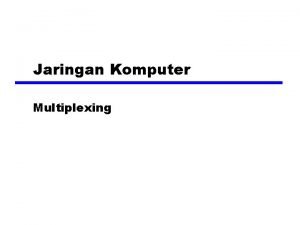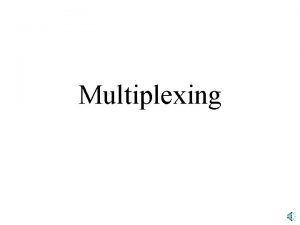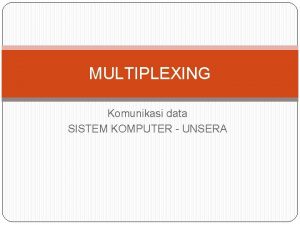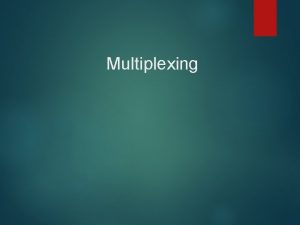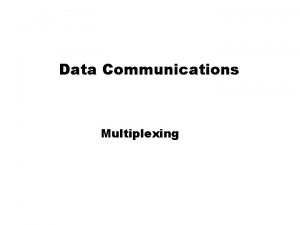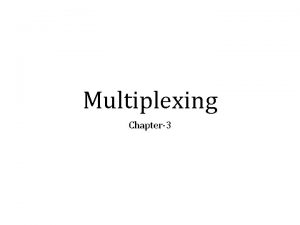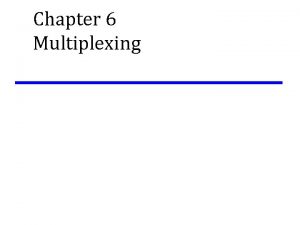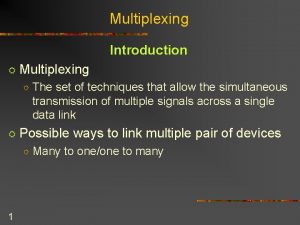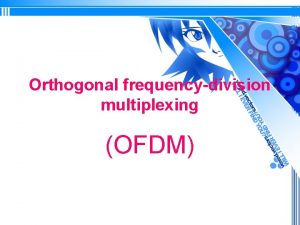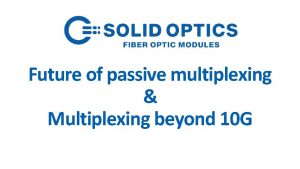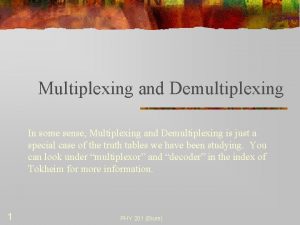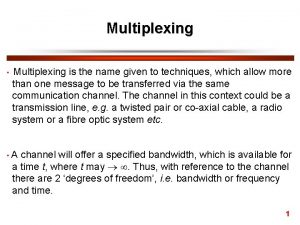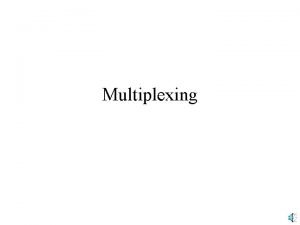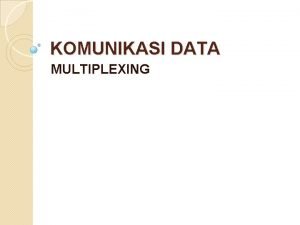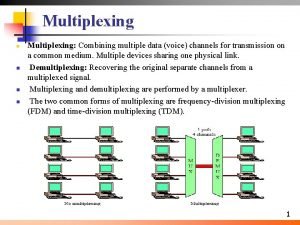Chapter 8 Multiplexing Many to oneone to many




































- Slides: 36

Chapter 8 Multiplexing • Many to one/one to many • Types of multiplexing • Telephone system

Multiplexing vs. No Multiplexing

Multiplexing Frequency -Division Multiplexing (FDM) Time-Division Multiplexing(TDM) Synchronous Asynchronous

FDM

FDM, Time Domain

Multiplexing, Frequency Domain

Demultiplexing, Time Domain

Demultiplexing, Frequency Domain

TDM

Synchronous TDM • Allocates exactly the same time slot to each device at all times, whether or not a device has anything to transmit.

TDM, Multiplexing

TDM, Demultiplexing

Framing Bits

Data Rate Bit Stuffing: Add extra bits to a stream of data such that the devices data rates are integer multiple of each other.

Asynchronous TDM (Statistical TDM)

Frames and Addresses a. Only three lines sending data

Frames and Addresses • Asynchronous TDM supports the same number of input lines with a lower capacity link. • The total speed of the input lines can exceed the capacity of the path.

b. Only four lines sending data

Frames and Addresses c. All five lines sending data

Multiplexing and Inverse Multiplexing

Telephone Network

services Analog services Digital services

Analog services Switched Leased

Analog Switched Service )PSTN

Analog Leased Service

Analog Hierarchy

Digital services Switched/56 DDS DS

Why Digital? • Less sensitive to noise. • Inexpensive. • Better quality.

Switched/56 Service Digital Service Unit (DSU): Changes the data rate to 56 Kbps and encodes it into the format used by the service provider. Support bandwidth on demand.

Digital Data Service (DDS) • The digital version of the analog leased line. • Subscriber can choose among 5 data rates: 2. 4, 4. 8, 9. 6, 19. 2, or 56 Kbps.

Digital Signal Service (DS) Hierarchy`

T Lines • DS-1, DS-2, … are services, T lines are the lines for transmission digital data, voice, etc. Service Line Rate (Mbps) Voice Channels DS-1 T-1 1. 544 24 DS-2 T-2 6. 312 96 DS-3 T-3 44. 736 672 DS-4 T-4 274. 176 4032

T-1 Line

T-1 Frame

Fractional T-1 Line

E Lines • European version of T lines. Line Rate (Mbps) Voice Channels E-1 2. 048 30 E-2 8. 448 120 E-3 34. 368 480 E-4 139. 264 1920
 Upward and downward multiplexing
Upward and downward multiplexing Crash recovery in transport layer geeksforgeeks
Crash recovery in transport layer geeksforgeeks Rtp multiplexing
Rtp multiplexing Transport layer handles multiplexing and demultiplexing
Transport layer handles multiplexing and demultiplexing Sonet multiplexing
Sonet multiplexing Difference between multiplexing and multiple access
Difference between multiplexing and multiple access Io multiplexing
Io multiplexing Code division multiplexing example
Code division multiplexing example Sdh multiplexing structure
Sdh multiplexing structure Block diagram of tdm system
Block diagram of tdm system Apa itu multiplexing
Apa itu multiplexing Statistical time-division multiplexing
Statistical time-division multiplexing What is multiplexing and demultiplexing
What is multiplexing and demultiplexing Pcm multiplexing
Pcm multiplexing Multiplexing and demultiplexing in transport layer
Multiplexing and demultiplexing in transport layer Statistical multiplexing example
Statistical multiplexing example Modulation multiplexing
Modulation multiplexing Io multiplexing
Io multiplexing Bandwidth utilization multiplexing and spreading
Bandwidth utilization multiplexing and spreading Multiplexing and spreading
Multiplexing and spreading Bandwidth utilization multiplexing and spreading
Bandwidth utilization multiplexing and spreading Fungsi multiplexing
Fungsi multiplexing Different types of multiple access techniques
Different types of multiple access techniques Teknik multiplexing
Teknik multiplexing Conversation multiplexing
Conversation multiplexing Spatial multiplexing
Spatial multiplexing Orthogonal frequency division multiplexing
Orthogonal frequency division multiplexing Dense wavelength division multiplexing
Dense wavelength division multiplexing Upward multiplexing
Upward multiplexing Multiplexing adalah
Multiplexing adalah Bandwidth utilization multiplexing and spreading
Bandwidth utilization multiplexing and spreading Many buyers and sellers
Many buyers and sellers E r diagram
E r diagram Convert conceptual model to logical model
Convert conceptual model to logical model Unary many to many
Unary many to many Unary many to many
Unary many to many Contoh erd one to many
Contoh erd one to many
